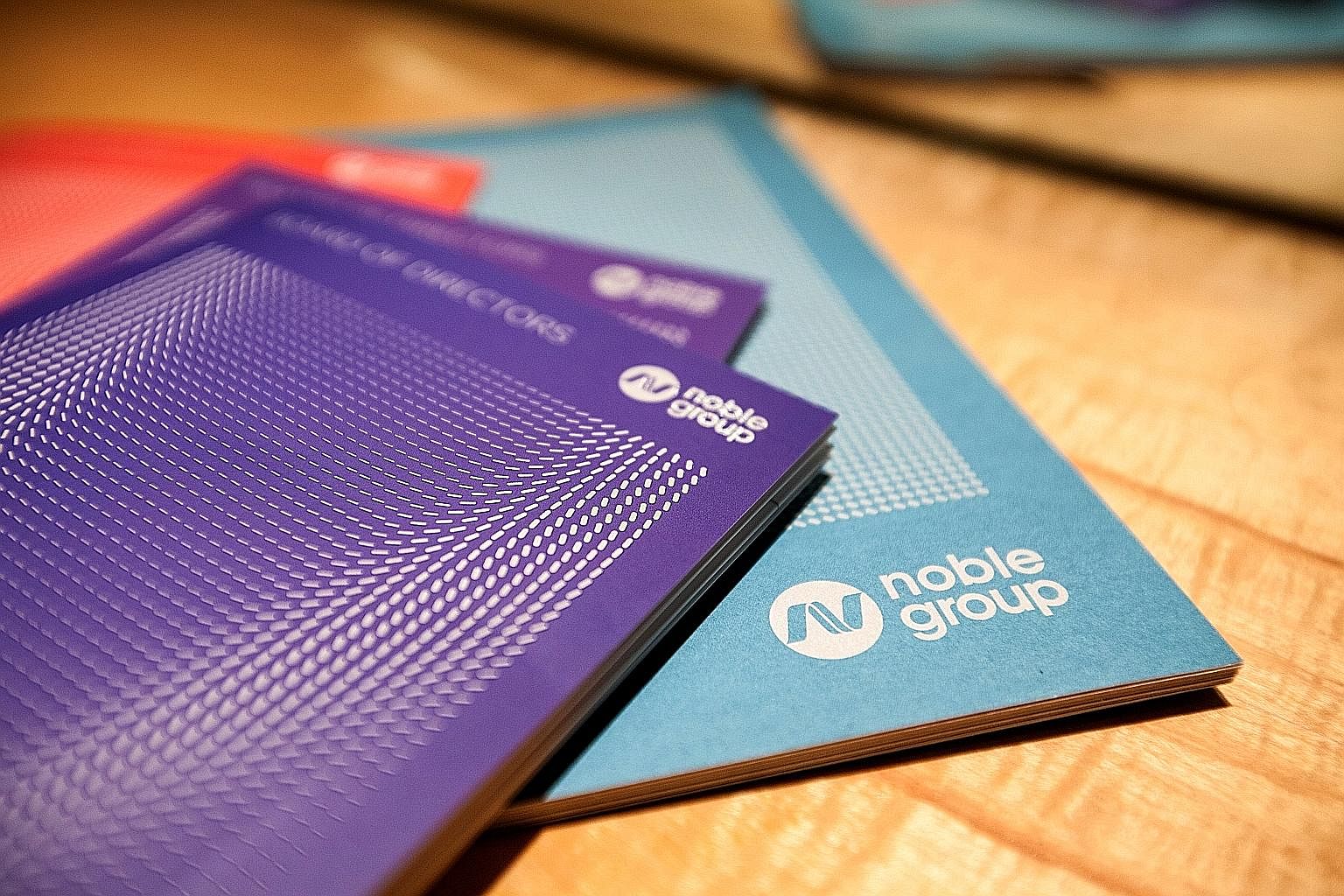Noble Group fired two of the few remaining bullets in its much depleted arsenal yesterday.
But don't expect a US$500 million (S$688 million) rights issue and the departure of founding chairman Richard Elman to add up to the embattled commodity company's Glencore moment of redemption.
While the bond market is right to bet that pressure on Noble's liquidity might finally ease, questions remain both about the harsh dilution of shareholders and the mainboard-listed firm's vexing management structure.
First, the rights issue. The offer for investors is to buy one new share for each they already own at 11 Singapore cents, compared with Thursday's closing price of 30 cents. China Investment Corp, the third-biggest shareholder, has agreed to take up its full quota, and Mr Elman, Noble's largest owner, is subscribing to less than his full entitlement. But minority investors still need to approve the deal, which will lower the per-share value of the company's tangible assets by 43 per cent from March.
Worse yet, the deep discount is a rebuke to the $138 million that Noble has spent buying its own stock last year at an average cost of 67 cents each. Those purchases now look like a futile and expensive attempt to prop up a slumping share price. At yesterday's offer price of 11 cents, the buybacks will have destroyed about $115 million of shareholder value, according to Gadfly's calculations.
It's not too hard to understand why Mr Elman's departure as executive chairman will occur sometime within the next year and not immediately. On Monday, chief executive officer Yusuf Alireza, who had for four years braved everything from a short-seller attack to slumping commodity prices to questions about aggressive accounting practices, unexpectedly left.

Investors could have been rather more badly rattled if the chairman had also exited four days later, with two recently appointed co-CEOs left steering the ship. Still, Mr Elman's continued presence has stopped being a confidence booster. Shareholders would have been far better served if the board had elevated Mr Alireza to chairman instead, provided the former Goldman Sachs executive wanted the job. That would have blunted the edge of the rights issue, and helped shine the spotlight instead on the imminent improvement in Noble's balance sheet.
While asset-sale announcements by Glencore last December and Anglo American in February have helped make those companies the two best performers in the Bloomberg Europe Metals & Mining Index so far this year, Noble shares are in the doghouse. The 13 per cent drop yesterday extended a two-year price decline to almost 82 per cent.
Other than the sale of a second slice of the agriculture business it started offloading to China's Cofco in 2014, the group has made no significant changes to restore its financial health. That's now changing.
For bond investors, the maths is easy enough: Add to the US$522 million rights issue the US$1.2 billion Noble hopes to get from selling its profitable North American electricity-trading business, plus the US$300 million to US$500 million of working capital that would be saved from it, and it's sufficient to repay bank debt coming due next year.
As for equity investors, here's their lollipop: A part of whatever operating cash Noble makes from its remaining operations can be deployed in "high return" businesses.
Mr Elman says his idea of high profitability is a return on equity of 25 per cent. That sounds overly optimistic, especially if the company is serious about pruning leverage. Shareholders will be satisfied if Noble's next chairman can set a more modest goal of earning the company's cost of capital.
Unfortunately, the weird management structure left in the wake of Mr Alireza's departure is unlikely to help that. Not many companies go down the split-CEO route. The lack of clear lines of authority tends to complicate decision making. The rare instances where it has worked have tended to be in companies where a founder remains in place as the informal leader - think Chipotle, Whole Foods, even BlackBerry in its glory days.
The planned departure of Mr Elman may be a necessary sacrifice, but it won't help this dynamic. It's bad enough having joint CEOs without a lame duck chairman as well.
• This column does not necessarily reflect the opinion of Bloomberg LP and its owners.
